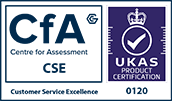Archive of the Direct Action Committee Against Nuclear War
Archive reference: Cwl DAC
One of the group of Commonweal Archives which give an incredibly rich and detailed picture of non-violent direct action movements in the 1950s and 1960s. Our 100 Objects exhibition features this archive: Object 11: Banning Britain's H-bombs.
The Direct Action Committee
The Direct Action Committee against Nuclear War originated as a result of Harold Steele’s 1957 protest against British H-bomb testing at Christmas Island. A group of Steele's supporters decided to march on the Atomic Weapons Research Establishment at Aldermaston. They elected a Committee, which became the DAC. Its aim, expressed in a Policy Statement adopted 10 April 1958: "to assist the conducting of non-violent direct action to obtain the total renunciation of nuclear war and its weapons by Britain and all other countries as a first step in disarmament". The original Committee comprised Allen Skinner, Hugh Brock and Arlo Tatum, but it soon grew to include, among others, Michael Randle (who became Chair), April Carter (Secretary), Pat Arrowsmith (Field Secretary), Michael Scott and Will Warren.
Direct actions were carried out to demonstrate at personal cost opposition to nuclear weapons and to focus public attention on the issues. Methods included marches and vigils, pickets and trades union campaigns, action on votes and taxes, and civil disobedience. The Committee was prepared for its members to be arrested and imprisoned and set up ad hoc committees to continue the work while key members were jailed. Activities included the 1958 March to Aldermaston; a campaign to withdraw labour from North Pickenham Thor rocket base in December 1958; a "No Votes for the H-bomb" campaign at the South West Norfolk by-election of 1958; and a campaign in Stevenage against the De Havilland and English Electric factories (making guided missiles).
The Committee developed strong international links, shown in action against nuclear testing in the Sahara and involvement in the Committee for Nonviolent Action San Francisco to Moscow peace march. The formation in 1960 of the Committee of 100, a mass civil disobedience movement against nuclear weapons, plus considerable financial difficulties, led to the decision in June 1961 to wind down the DAC. Their final activity was a campaign against Polaris at Holy Loch in spring 1961.
The Archive
The Archive was donated to Commonweal circa 1984. At the heart of this important collection are 124 files about the campaigns carried out by the Committee, including extensive correspondence, publicity, circulars, and details of those who took part. The archive also includes minutes, policy, conferences, administrative files, and subject files concerning links with CND and other groups. 32 scrapbooks of press cuttings show how the media responded to their campaigns.
The Archive was catalogued as part of the PaxCat Project, with support from the National Cataloguing Grants Programme for Archives.
Related archives in Special Collections include the Papers of Hugh Brock, the Papers of Michael Randle, and the Papers of the European Organiser of the American-European Peace March.
Cwl DAC Direct Action Committee Archive Catalogue
If you require this information in an alternative format, please contact our team. You can also read our Website Accessibility Statement.


